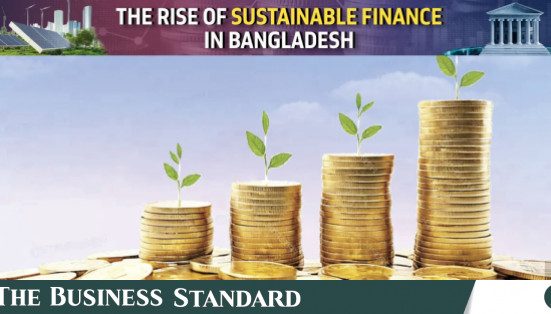MUCH of the country was submerged in the monsoon-induced floods of 2011, and again in 2022 — and with them, so was the illusion that climate change was a distant threat. The IMF estimates the joint economic cost of these disasters at $58 billion. In May 2025, the IMF approved an additional $1.4bn under the Resilience and Sustainability Facility to enable Pakistan to enhance economic resilience against climate vulnerabilities and natural disasters. To meet IMF conditions, Pakistan must show tangible commitment towards building a climate-resilient economy.
The State Bank of Pakistan (SBP) requires banks and financial institutions to reduce exposure to environmental and social risks and incentivise green practices to safeguard themselves and their clients against climate disasters. The 2017 Green Banking Guidelines encouraged banks and financial institutions to manage environmental and social risks associated with their operations and financing activities. The 2022 Environmental and Social Risk Management Implementation Manual supports the transition to a climate-resilient economy by introducing standardised tools for environmental and social risk classification, monitoring banks’ own environmental impact and encouraging lending to ‘green’ sectors. The 2025 draft Green Taxonomy provides guidance on which economic activities qualify for green finance.
The SBP’s monitoring reports and public disclosures show progress towards greening the financial sector. All banks and financial institutions operating locally now have designated green banking officers. Seventy-nine per cent have approved green banking policies on environmental risk management, green business facilitation and reduction in their own carbon emissions. And 69pc have integrated environmental risk with their credit risk assessment procedures.
The SBP’s Renewable Energy Refinance Scheme, launched in 2016 to promote renewable energy projects, is an example of a successful green finance product. The facility had disbursed Rs94.7bn by 2024, supporting more than 4,500 RE installations and generating 2,061 MW of power. The SBP is now promoting green bonds and sukuks by providing opportunities for credit enhancement, and green taxonomy-aligned eligibility criteria.
Efforts are on to green the finance sector.
The issuance of Pakistan’s first green sukuk, valued at Rs30bn, is a progressive shift towards green finance and sustainable investment. Microfinance banks have introduced microloans for electric bikes and climate-resilient farm technologies. Several financial institutions and insurance companies have also launched innovative crop insurance products that offer protection against natural calamities.
Some non-bank microfinance institutions regulated by the SECP have also introduced environmentally and socially focused financial products. InfraZamin together with Kashf Foundation launched a Rs2.5bn bond to fund women-led micro-infrastructure projects and support rural education, housing and small businesses. A Rs1bn green bond launched by Parwaaz Financial Services Ltd is set to finance RE, sustainable agriculture, energy efficiency, clean transportation and pollution management.
Leading banks have also progressed towards reducing their own environmental impact by introducing paperless banking solutions, solarising bank branches, adopting energy-efficient IT infrastructure, and encouraging consumer behaviour change by charging for ATM paper receipts. These advances are proof that the financial sector is beginning to go green and is realising the potential of investment in climate adaptation and resilience. The adoption of the National Green Taxonomy will further enable a streamlined approach to tap green investment opportunities while insulating investments against climate risk.
However, the advancement of a climate-resilient economy requires increased public and private sector cooperation to de-risk investment opportunities for private investors. Driven by conducive policies, Pakistan’s recent solar boom is testament to opportunities for developing and scaling blended finance for climate solutions. Investment in climate-resilient infrastructure, early warning systems, efficient water management and sustainable agriculture will pay off in the form of reduced input costs and improved investment attractiveness and corporate reputation for the private sector. Enabling access to climate risk models can enhance resilience by democratising data and stimulate innovation. Capacity building support and implementation toolkits can enable organisations to develop and implement climate adaptation strategies. Robust and transparent green investment frameworks can build investor confidence.
Ultimately, climate-proofing financial systems can catalyse improvement across industries and spur economic change in Pakistan.
The writers have expertise in climate finance and sustainability.
Published in Dawn, July 17th, 2025







